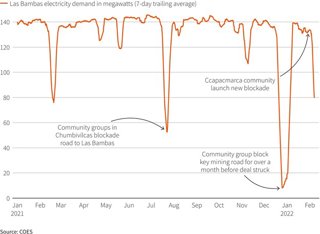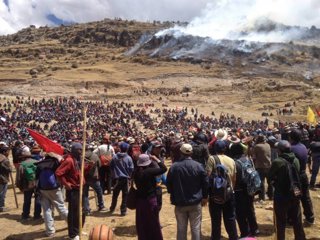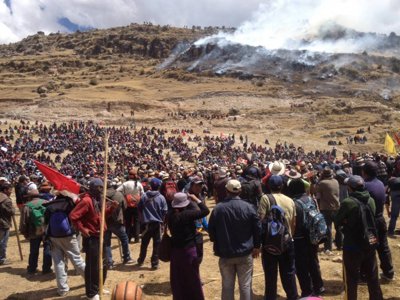This resource was written by Nick O’Sullivan, author, and Urban Geography fieldwork teacher.
Peru
Peru is located on the west coast of South America. It is a country of great physical diversity with a desert coastal belt (where the capital city Lima is located), the Andes further inland, and an interior dominated by tropical rainforest. It is a resource-rich country, with huge reserves of copper, oil, gold, and other rare metals. However, it relies on FDI (Foreign Direct Investment) for extraction and export.
Historically the country has suffered from corruption, poor governance, and exploitation by foreign TNCs (Transnational Corporations), which has hindered economic progress. In recent years China has looked to countries like Peru to secure resources and to maintain the growth of its industries – and thereby it’s global economic power. Many mining projects in the region have been controversial, particularly due to environmental damage and social impact, and are widely seen as acts of neo-colonialism.
The Las Bambas copper mine
The mine is run by state owned China MinMetals (MMG Ltd) and is located in the Andean Mountains in the Apurimac region of Peru, just 70 km from the city of Cusco. It produces 2% of the world’s copper production and is a major export earner for Peru. Recently, the mine has been beset by a large number of blockades, with angry members of local communities preventing road access. This has meant output from the mine is currently 35% below the level of Las Bambas' 2017 debut. Dwindling production correlates to drops in electricity over the past year, as shown in Figure 1.

Figure 1 power usage has dropped sharply during periods of protests © Reuters
Local and relocated communities are angry about the fact that the promised schools, hospitals, water pipelines and communication infrastructure have not materialised.

Figure 2 Las Bambas protests © Oxfam Photo: Observatorio de Conflictos Mineros en el Perú
A key issue is that a railway line, which was designed to transport copper away from Las Bambas to Matarani port (235 km away), has been replaced by an unpaved road due to high cost. As a result, the dust produced by the large number of vehicles using the road (300+ per day) has led to health issues for local communities. Dust and air pollutants have also affected local crops ruining harvests and impacting farmers’ livelihoods.
Local streams and rivers are polluted from dissolved metals. Water supplies and aquatic life have become contaminated and suffer from the constant vibration of heavy vehicles. This has caused structural damage to local homes.
The protests have at times been violent with loss of life. The current President of Peru, Pedro Castillo, has vowed to cut the profits made by foreign TNCs and redistribute wealth more fairly across the country. This has been well-received by local Peruvian communities, and has galvanised some of the protests, however such approaches are often seen as a disincentivizing for incoming FDI.
Further work
-
Reuters Mining activity at Peru's Las Bambas tumbles amid blockade
-
Nikkei Asia China's MMG races for deal to protect copper flow from Peru mine
-
BBC News Las Bambas: Peru copper mine halts operations amid protests
-
South China Morning Post Chinese miner MMG to halt production at Peru’s Las Bambas copper mine amid blockades, stand-off with villagers
-
China Dialogue The Chinese mining giant and the ghost town
-
Reuters MMG's Las Bambas copper mine in Peru to suspend operations after protest
-
Al Jazeera Peru community plans to restart blockade of mine road amid truce
-
MMG Limited Las Bambas promotional video
-
Oxfam Renewed violence around Las Bambas mining project: Will we learn from past mistakes?
